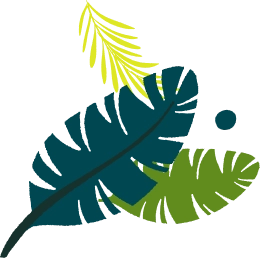


Inside Saigon’s Chinatown (Chợ Lớn), An Dong Market is a colorful maze of shops and stalls spanning six floors. It’s long been a trading hub for the Chinese-Vietnamese community, so you’ll feel history in the air as you browse.
Today it’s quieter than it once was, but that means more room for authentic exploration. Fabric bolts unfurl everywhere, and cases of gold jewelry glitter under glass. In between shopping, the mouth of the market (or its bustling basement food court) fills with the smell of hot phở and bánh mì which is a reminder that this is still truly a Saigon slice of life.
An Dong Market sits at 455 An Dương Vương, District 5, HCMC (Google maps link). It’s easy to reach:
Motorbike: The most flexible way. You can park around the market for about 5,000-10,000 VND (roughly $0.20-0.40). Just watch the traffic when pulling in as rush hours can jam the streets.
Taxi: Taxis and rideshares can drop you right at the entrance. From District 1 downtown, the ride costs about 60,000 VND (~$2.50).
Bus: Local buses are cheap and give you a peek of city life. Routes 06, 56, and 139 stop nearby. A ride from District 1 is only 6,000-8,000 VND (under $0.50).
The market is open daily from 6:00 AM to 6:00 PM (some food vendors stay open later). It’s about 3 km from the city center and roughly 8 km from the airport.
a Dry Fruits Stall in an Dong Market
Shopping Floors:
Basement: Here you’ll find jewelry (gold, silver) and dry goods like chili flakes and dried squid. It’s also home to a food court. Don’t miss the coconut candies or dried seafood.
Ground Floor: The busiest level. Stalls sell fabrics, shoes, handbags, cosmetics. Silk and lace (150k-300k VND/meter) are sold here - perfect if you want an ao dai made-on-site (some places can stitch one up in 2-3 hours).
1st Floor: Ready-to-wear clothing for men, women, kids (shirts, dresses at 200k-300k VND). You’ll also find trendy local designer stalls amid the racks.
2nd Floor: Traditional ao dai, ethnic handicrafts, swimwear - a rainbow of embroidery and textiles. This is where souvenirs and artfully stitched scarves live. Prices are generally fixed, but you can still haggle about 10-20% on larger buys.
3rd Floor: A treasure trove for vintage-lovers: retro jackets, ethnic décor, hand-stitched wallets (silk tops ~250-400k VND).
4th Floor: Mostly clearance and storage. Here you can hunt for old-season stock or sample sales - sometimes up to 50% off prototypes and discontinued items.
Clothing Stores Section of the Market
Food Court & Local Eats: An Dong isn’t just about shopping. In the basement food court, you can try Saigon street classics:
Banh mi: A Parisian baguette stuffed with Vietnamese meats. An Dong’s legendary sandwich stall (over 40 years old) serves pork meatballs, Vietnamese sausage, pickles and sauce for a comforting lunch.
Bún mọc sườn sụn: A clear, hearty pork broth with bouncy pork balls and rib cartilage - often wood-fired for extra flavor.
Phở, Hủ tiếu Nam Vang: Soups with noodles.
Vegetarian cơm tấm: Even meat-free eats are on offer, including plant-based broken rice dishes.
Drinks: After spicy soup, try a cooling herbal tea (nước sâm or nước mát) sold at the entrance stands.
Local Restaurants Inside the Market Provide Cheap and Delicous Vietnamese Food Options
Insider Tips:
Bargaining: Many stalls allow polite haggling. The vendors advise starting around 60-70% of the asking price. A friendly attitude works wonders. Try it on silk or shoes, but be reasonable - small stores have low margins.
Quality Check: Examine fabric closely for sheen and texture. For leather, check stitching and smell (real leather is supple, with no chemical odor). Chinese-Vietnamese traders here are proud of quality - ask for any certification if you’re unsure (e.g. Ao dai sellers often point out fabric origins).
Currency Exchange: On the basement level, you’ll see a booth “My Hà” - it’s a local currency changer with good rates (about 1 USD = 23,000 VND as of 2025). Handy to have cash before shopping.
New Arrivals: The early morning (9 AM) is when new stock arrives on floors 1-2. Visit them to see the latest fashions before they sell out (and to avoid crowds).
Hidden Gems: Walk beyond the escalator exits. Small nooks on each floor often hide local-run stalls selling herbal teas, incense, or even live yến (bird’s nest) products. A dive into one of these can feel like stepping into a private bazaar.
Opening Hours: 6:00 AM - 6:00 PM daily. (Some vendors, especially in the food court, may stay open later.)
Admission: Free (it’s a public market).
Best Time to Visit: Late morning (9-11 AM) is lively but not yet chaotic, and you’ll catch traders at work. The weekend can be busy with locals, but weekdays are calmer. The market quiets after 4 PM.
Facilities: Restrooms are available (mostly on ground/basement floors). The basement has seating at the food court. ATMs and small spas/salons are tucked in near entrances if you need a break.
Parking: If you’re on a motorbike, look for the guarded parking lot near the Hung Vuong street entrance (cost ~5k-10k VND). Cars are rare but can park on side streets.
Nearby Amenities: Just outside An Dong is Cho Lon, Saigon’s Chinatown. You’ll find Chinese herbal shops, the ornate Thiên Hậu Pagoda (worth a quick temple stop), and the peaceful Hoà Bình Park (for resting tired feet).
Saigon China Town in Ho Chi Minh City (cho Lon)
9:00 AM: Start at the ground floor fabric section. Browse silks and Ao Dai materials; test the haggle.
10:30 AM: Head downstairs to the basement food court. Have a quick lunch - try the legendary bánh mì and a bowl of bún mọc sườn sụn.
11:30 AM: Explore the jewelry and dry goods in the basement. Pick up some dried fruit snacks or herbal tea.
12:30 PM: Ascend to Floors 1-2 for clothing, ready-made dresses, and souvenirs. Check the second floor for traditional handicrafts and lacquerware.
2:00 PM: Visit the Thiên Hậu Pagoda (10 min walk) to see dragon-adorned rooftops. Then relax at nearby Hòa Bình Park before heading out.
If you have more time: uncover the second floor’s tailors (they can sew an Ao Dai in hours), or drift into neighboring Cho Lon markets for bargain electronics.
Pickpockets: An Dong is safe, but it’s busy. Guard your belongings. Keep wallets in front pockets or a zipped bag. (Market vendors advise: carry bags across your chest and keep phones out of back pockets.)
Haggling Culture: Always be polite when bargaining. Use gentle smiles. If a stallkeeper is friendly, they may offer small discounts or free samples. Saying “đồng ý” (deal!) warmly goes a long way.
Dress Comfortably: There’s a lot of walking and stair-climbing. Wear comfy shoes and cool clothing - it can get warm inside, especially near fabric bolts.
Respect Customs: If you stop for food, eating at the little plastic tables is fine. If you visit a temple nearby, dress modestly (cover shoulders) and remove your shoes.
Weather: Ho Chi Minh City is tropical - bring sunblock and stay hydrated. The market itself is covered, but it’s not air-conditioned.
Entrance of the an Dong Market, Saigon
Do I need to pay to enter An Dong Market?
No, admission is free. Just shop or eat to your heart’s content.
What are An Dong’s opening hours?
Daily 6:00 AM - 6:00 PM (some stalls open a bit later, especially on weekends). Plan to arrive after 9 AM for the fullest experience.
What can I buy there?
Just about anything fashion-related! Fabrics (silk, cotton, lace), ready-made clothes, shoes, handbags, children’s clothes, jewelry, and souvenirs. The basement specializes in gold/silver accessories and dried foods (like chili, squid). It’s famous for high-quality fabrics for making áo dài and tuxedos.
Is bargaining allowed?
Yes, especially on clothes, fabrics, and large purchases. Begin around 60% of the sticker price and negotiate kindly. Vendors expect it. Jewelry prices can be a bit more fixed, but you can still ask for small discounts or a gift-wrapping.
How is An Dong different from Ben Thanh Market?
Ben Thanh (District 1) is more touristy and smaller. An Dong is a real local wholesale market with fewer foreign tourists. It’s quieter now, giving you a “behind-the-scenes” feel of Saigon’s retail world.
Is there food inside the market?
Definitely. The basement food court has Vietnamese staples (phở, hủ tiếu, bánh mì). You can also buy fresh tropical fruit from vendors in the basement. Outside, dozens of street vendors sell snacks like chè (sweet soup) and cà phê.
How to get to An Dong Market from the airport?
The airport is about 8 km away. A taxi or rideshare will take ~20-30 minutes (fare ~150-200k VND). Public bus 152 (from airport to RMIT University) plus a short walk or motorbike taxi will also get you there on a budget.
Get the latest information about our tours and special offers!